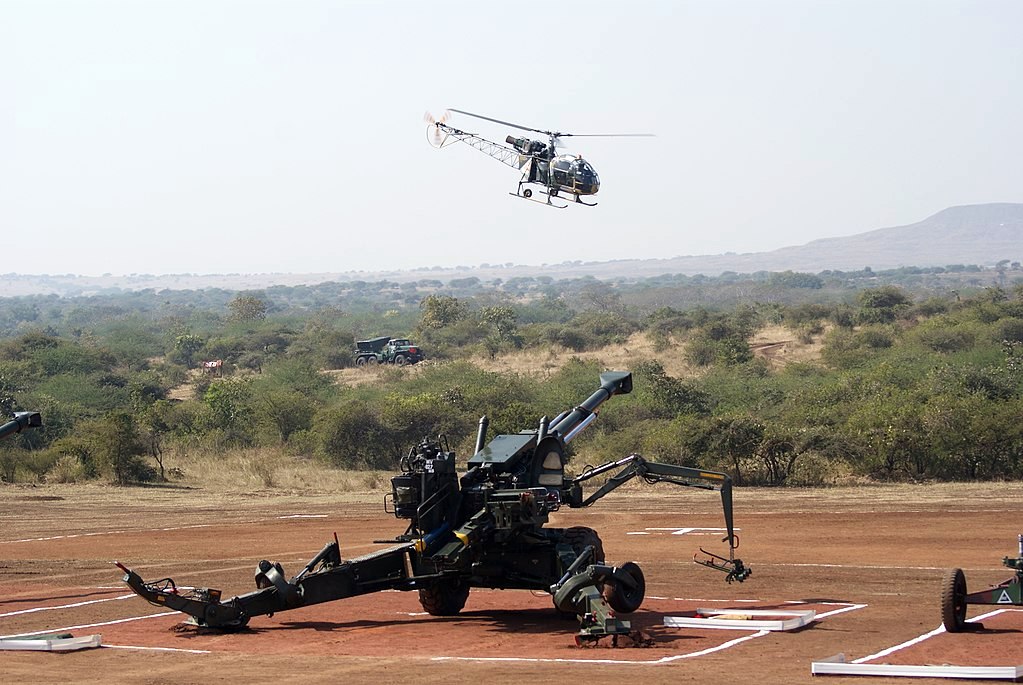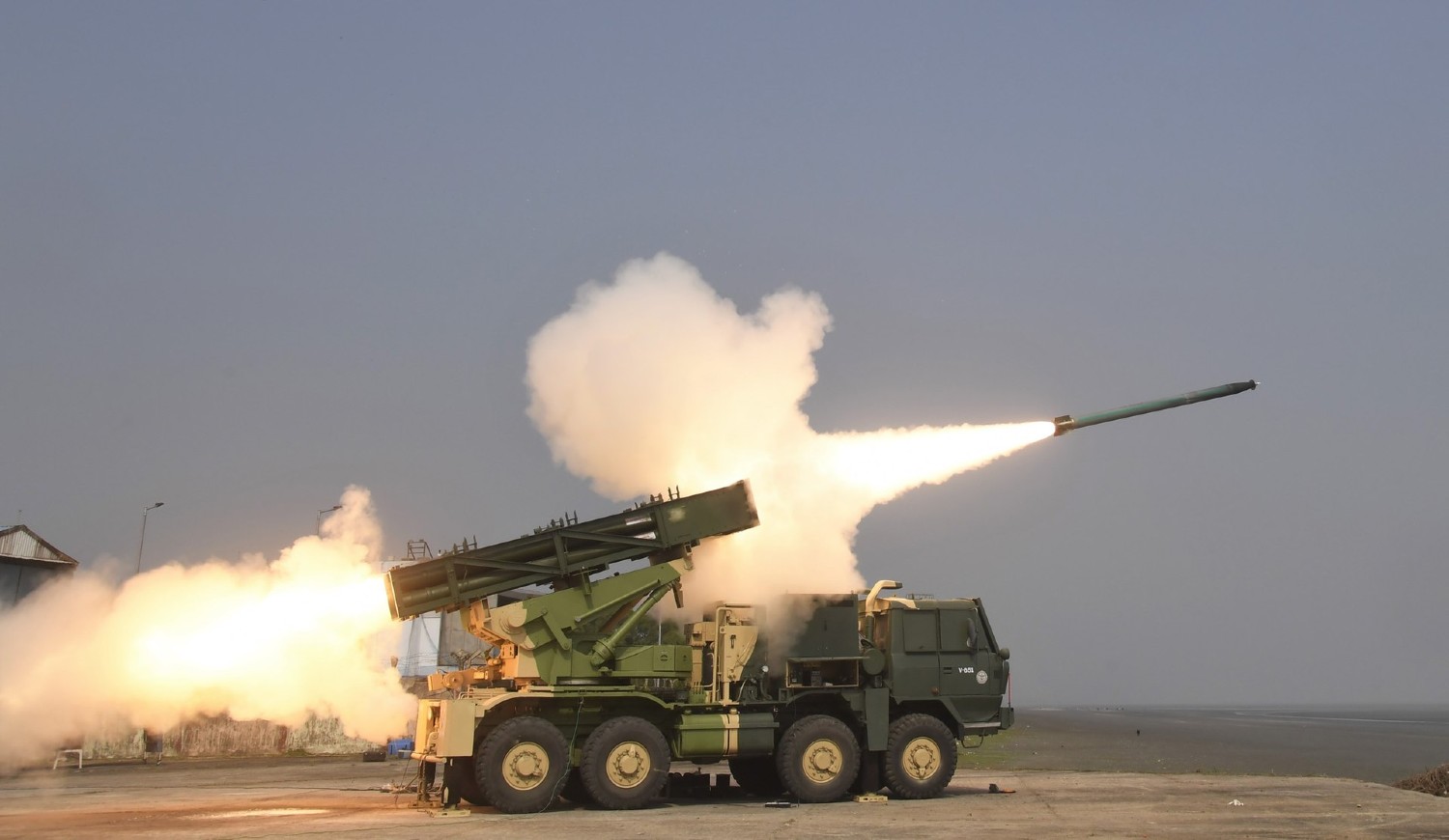The Indian Army is looking to acquire drones and surveillance devices to accurately direct its long-range and high-volume firepower against enemy targets, as per a recent Times of India (TOI) report.
Within the next few days, the Indian Army will reportedly issue an RFP for the procurement of 80 mini remotely piloted aircraft systems (RPAS), ten runway-independent RPAS, 44 upgraded long-range surveillance systems, and 106 inertial navigation systems.
While the service already has larger unmanned aerial vehicles (UAVs), such as the Israeli-origin Herons and Searcher-IIs, but those systems are employed only for strategic surveillance.
The new RPAS will be used for tactical surveillance to locate enemy soldiers and weapon systems in a particular sector. In contrast, strategic surveillance aims to determine the big picture, for example, where the enemy is concentrating his forces, what routes are used for supplies, where are the logistics hubs, etc.
“The new smaller RPAS, with an operational range from 15-20-kilometer to 60-90-kilometer, are needed by artillery units for tactical over-the-hill surveillance in high-altitude areas. If they perform well, the Army will go in for larger numbers,” TOI reported citing a source.
The Chief of the Indian Army, General Manoj Pande, recently said that “a significant level” of border infrastructure has been developed in the frontline areas of eastern Ladakh in the past two years, which included habitation for 35,000 troops, garages for 450 tanks and other armored vehicles, and 350 artillery systems and howitzers.

The artillery systems deployed by the service during the 30-month standoff with China in eastern Ladakh include old 105mm field guns and Bofors howitzers, and the ‘up-gunned’ Dhanush (an upgraded version of the Bofors 155-mm/45-cal howitzer) and Sharang guns (Russian 130mm field gun up-gunned to 155-mm/45-cal), plus the new M-777 ultra-light howitzers and K-9 Vajra self-propelled tracked guns.
The Army has also fielded the indigenous Pinaka (akin to US HIMARS) multi-launch rocket systems (MLRS) and similar Russian-origin Smerch and Grad units.
“The new RPAS with day-and-night capability are consequently needed by forward observation posts to look deeper and direct, correct, and analyze artillery fire. An indigenous LORROS (long-range reconnaissance and observation system) is also about to begin trials… the existing Israeli Lorros was inducted two decades ago,” the source told TOI.
As per the requirement of the Army, the new man-portable mini-RPAS must weigh up to 15 kilograms, have a mission range of at least 15 kilometers, and have an operation endurance of no less than 90 minutes.
While the runway-independent RPAS should have the vertical take-off and landing (VTOL) capability at an altitude of 13,000 feet with a minimum four-hour endurance
“With electro-optical payloads, the RPAS should be ideal for a dynamic sensor-shooter linkage, reducing fixed-wing launch and recovery challenges,” the source said.
Accuracy In Artillery Fires
Drone-assisted artillery and MRLS strikes are rising, as observed in the ongoing Ukraine war.
It is challenging to realize pinpoint accuracy with artillery rounds fired at grid coordinates that are invisible to the gunner, as these rounds will have a circular error probable (CEP), measured in tens of meters, which means half of the projectiles fired will land in a circle with a radius of that size.

While laser-guided artillery rounds can be used for precision strikes, the laser designators required for this only have a range of a few kilometers.
The inaccuracy of artillery fire can be attributed to many factors, such as errors in the location of the gun or the target, weather conditions, errors in the calibration of the aiming sights, and differences in the amount of propellant between different batches of artillery rounds.
Two known techniques for these errors are pre-registered and adjusted fires.
In a pre-registered fire, a battery in a defensive position will fire a few rounds ahead of confrontation with the enemy to train the guns on a particular piece of terrain where the enemy is sure to arrive. Once the enemy arrives, several batteries of guns and MLRS systems can be employed simultaneously to ambush the enemy.
In an adjusted fire, the gunner relies on an artillery observer on the ground who notes where the first round lands and tells the gunner how to adjust the aim, so a series of rounds can be guided toward the target.

While artillery observers can guide artillery fires accurately toward individual vehicles or bunkers, they cannot observe certain types of targets, like the enemy artillery located deep behind the lines.
Apart from that, there is also a parallax problem in those rounds that fall between the observer and the enemy, impairing the observer’s ability to accurately assess how close or far the shell has landed to the target.
Drone-Assisted Artillery Firing
Modern drones equipped with cameras present the third technique to negate the inaccuracy of artillery fire.
Unlike human artillery observers, drones can provide a birds-eye view of the opponents, making it much easier to watch where the shells are landing and guide them toward the target.
Also, drones can not only locate the targets present far behind enemy lines but also those hidden under the cover of forests or buildings.
Most importantly, employing drones for artillery fires avoids having to put humans in harm’s way.
Supposed sniper hit at the Donbas front: forward artillery observer, ?? 95th air assault brigade (95 одшб). It is very weird: the observer should be camouflaged, or it was just a moment of complete ignorance and lack of situational awareness…
(source: https://t.co/vt3w8z9oml) pic.twitter.com/UWYLB5qGOv— Mike Mihajlovic (@MihajlovicMike) February 22, 2022
The ongoing Ukraine war has demonstrated how effective drone-assisted artillery strikes can be, as both the Russian and Ukrainian forces continue to post drone videos on social media showing enemy targets, such as armored vehicles or even self-propelled artillery, being observed for a few seconds before they explode due to an attack by an unseen projectile.
Ukrainian Kozak armored vehicle destroyed by Russian artillery pic.twitter.com/cJR3zTvutA
— LogKa (@LogKa11) October 15, 2022
Some of these videos also depict multiple targets being struck one after the other.
#Ukraine: Two Russian tanks, APC, a KUNG trailer and BMP-3 IFV were destroyed and damaged by high-precision strikes of the Ukrainian 44th Artillery Brigade in the East. pic.twitter.com/WJHNecOun3
— ?? Ukraine Weapons Tracker (@UAWeapons) October 19, 2022
Notably, the critical aspect of artillery duel is counter-battery fire, which relies on counter-battery radars that determine the coordinates of the launcher based on the trajectories of incoming projectiles.
However, with the advent of drones, the artillery duel in Ukraine has morphed into a race where both sides are trying to destroy the enemy artillery first and then target other targets such as armored vehicles or ground troops.
- Contact the author at tanmaykadam700@gmail.com
- Follow EurAsian Times on Google News




